Monday☕️

Economics & Markets:
- Today’s commodity market:
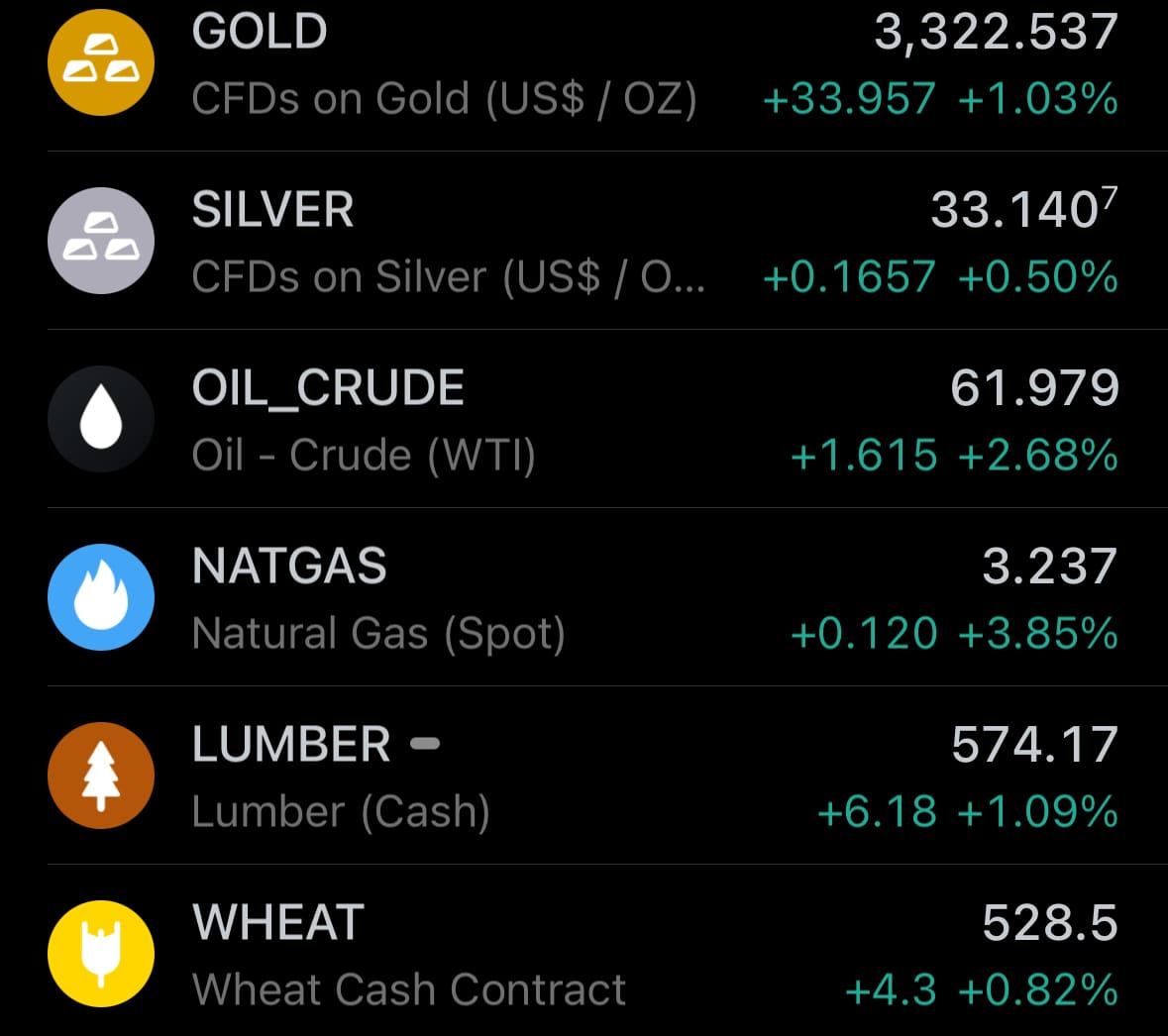
- Today’s crypto market:
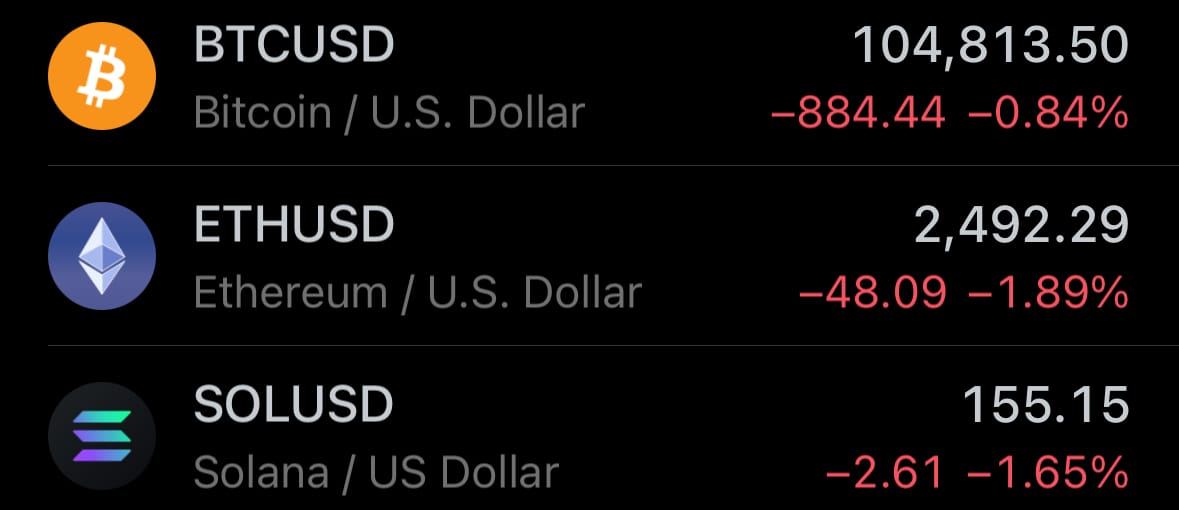
Geopolitics & Military Activity:
- Yesterday, June 1, 2025, Ukraine conducted a large-scale drone operation targeting Russian military sites, including Belaya Airbase in Irkutsk Oblast, roughly 4,200 km (2,610 miles) from Ukraine’s border, Olenya Airbase in northern Russia, and Severomorsk Naval Base, approximately 1,000 km (621 miles) away. The operation, reportedly planned over 18 months by Ukraine’s Security Service (SBU), involved drones launched from mobile units within Russia, programmed to self-destruct after the mission.

- Sources indicate the strikes damaged or destroyed several aircraft, including Tu-95 strategic bombers capable of carrying nuclear missiles, with significant financial losses reported. This operation demonstrated Ukraine’s ability to conduct long-range strikes deep within Russian territory. Russian reports confirmed damage at the targeted facilities, with evidence of fires and affected aircraft at Olenya Airbase.
Environment & Weather:
- Yesterday, June 1, 2025, Northeast India experienced severe flooding due to heavy monsoon rainfall, resulting in 32 deaths within a 24-hour period across several states. Arunachal Pradesh reported nine fatalities caused by flash floods and landslides. In Assam, 11 people died, with 175 villages inundated and more than 78,000 individuals impacted as rivers overflowed. Meghalaya recorded seven deaths, Mizoram had six, and Nagaland reported one. The intense rainfall, typical of the monsoon season, led to significant damage to infrastructure, homes, and agricultural lands, exacerbating the challenges faced by communities in this flood-prone region.
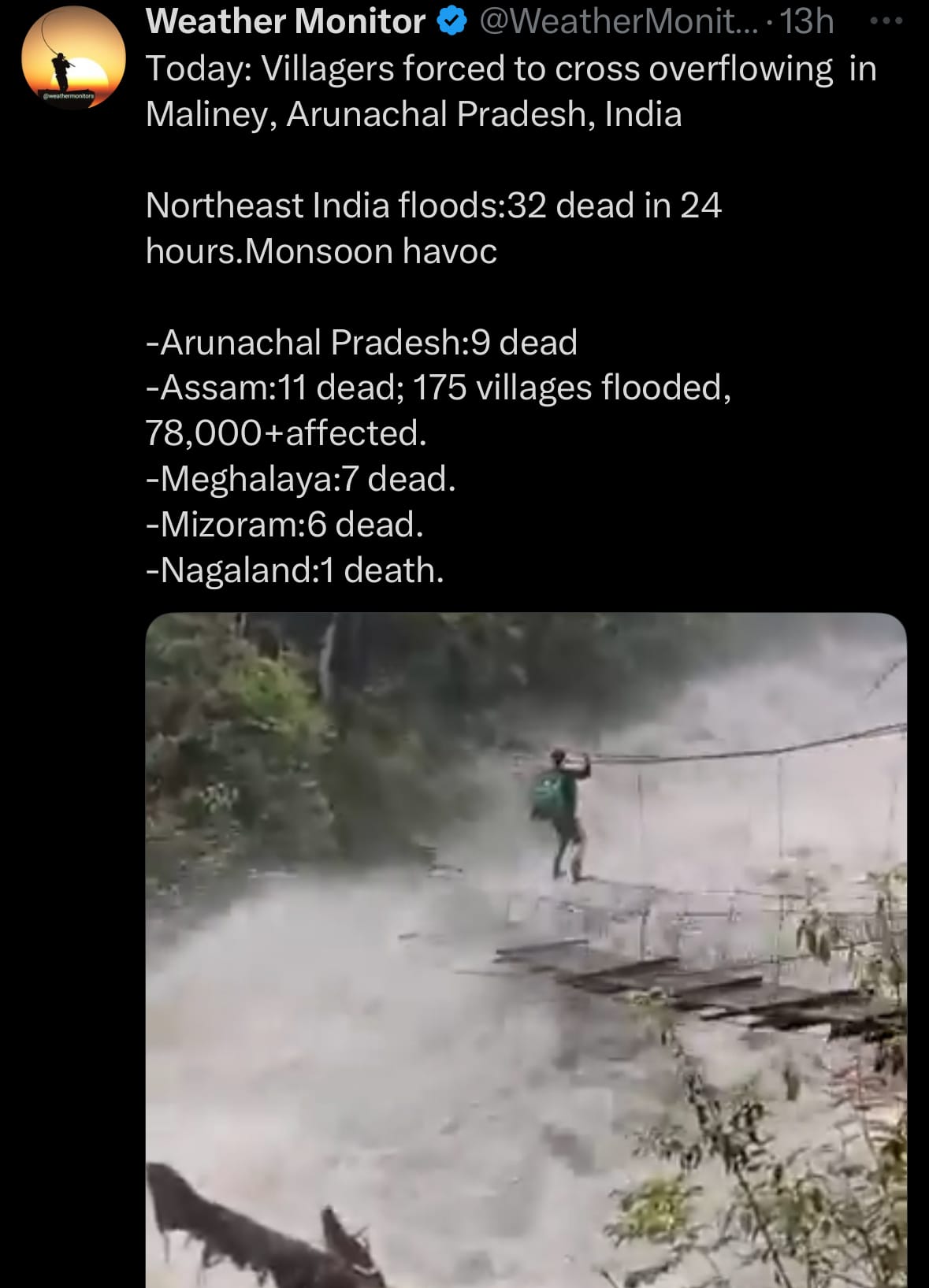
- The flooding created hazardous conditions, forcing residents in areas like Maliney, Arunachal Pradesh, to navigate overflowing rivers using makeshift bridges to escape or access essential resources. Local and national authorities responded by launching rescue and relief efforts, including distributing food, water, and medical supplies to affected areas. However, damaged roads and bridges isolated many remote villages, complicating aid delivery. This disaster highlights the recurring impact of monsoon flooding in Northeast India and the need for enhanced disaster management strategies and infrastructure to mitigate future risks.

Space:
- On May 31, 2025, SpaceX launched the Starlink Group 11-18 mission from Space Launch Complex 4 East (SLC-4E) at Vandenberg Space Force Base, California. The mission utilized a Falcon 9 Block 5 rocket to deploy 27 Starlink satellites into low-Earth orbit, contributing to SpaceX’s constellation aimed at providing global broadband internet. The first-stage booster, B1071, on its 25th flight, successfully landed on the autonomous droneship "Of Course I Still Love You" in the Pacific Ocean, demonstrating SpaceX’s reusable rocket technology.
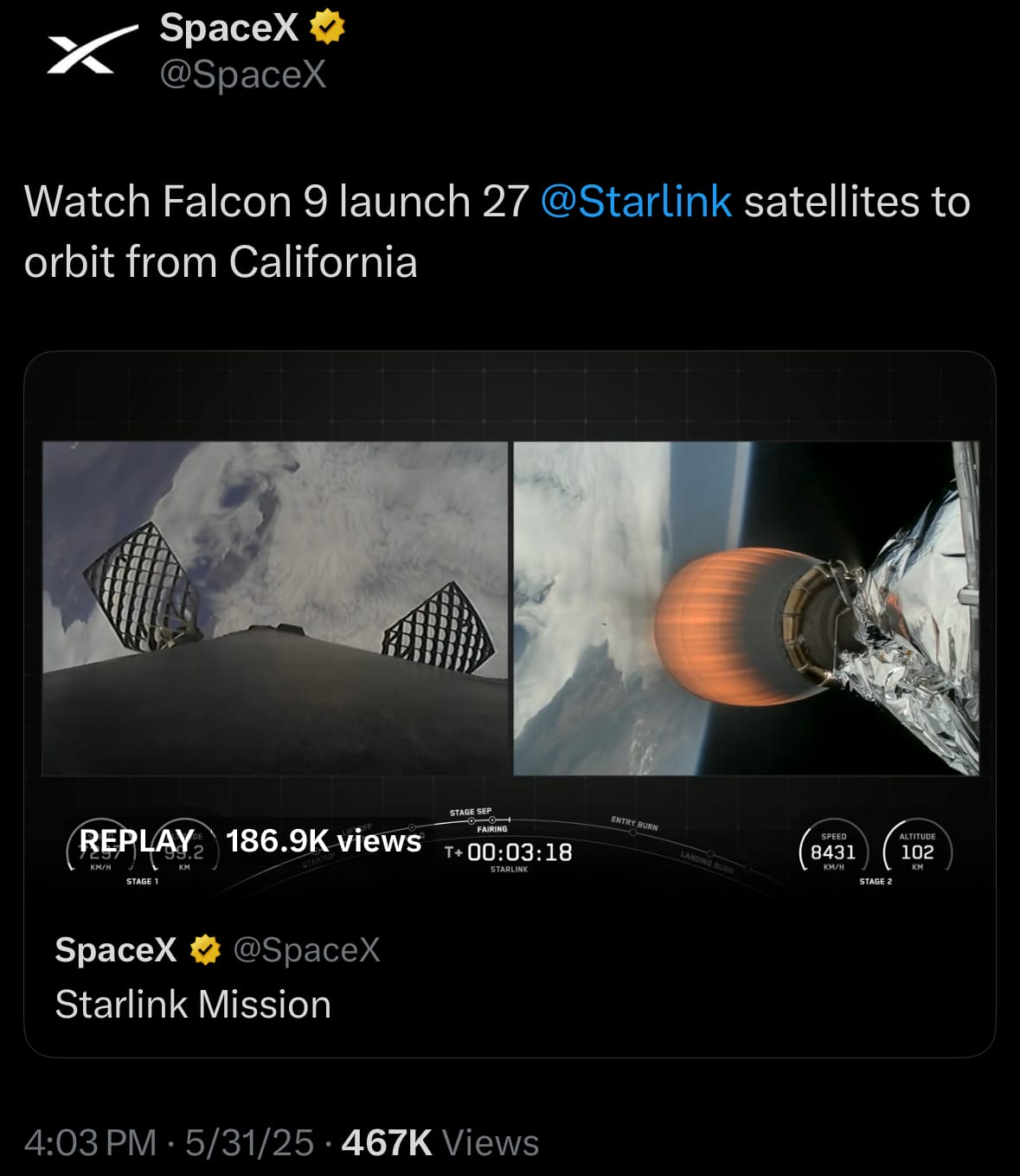
- On the same day, Blue Origin conducted the NS-32 mission, its 12th human spaceflight and 32nd overall flight of the New Shepard program, from Launch Site One in West Texas. The suborbital flight carried six passengers: Aymette (Amy) Medina Jorge, a K-12 STEM teacher; Dr. Gretchen Green, a radiologist; Jaime Alemán, former Panamanian ambassador; Jesse Williams, a businessman; Mark Rocket, an aerospace executive; and Paul Jeris, an entrepreneur. The mission’s payload included the crew and a small number of microgravity research experiments. The New Shepard rocket ascended above the Kármán line (100 kilometers), providing passengers with brief weightlessness and views of Earth before a parachute-assisted landing. This flight advanced Blue Origin’s goals of suborbital tourism and scientific research using reusable rocket systems.
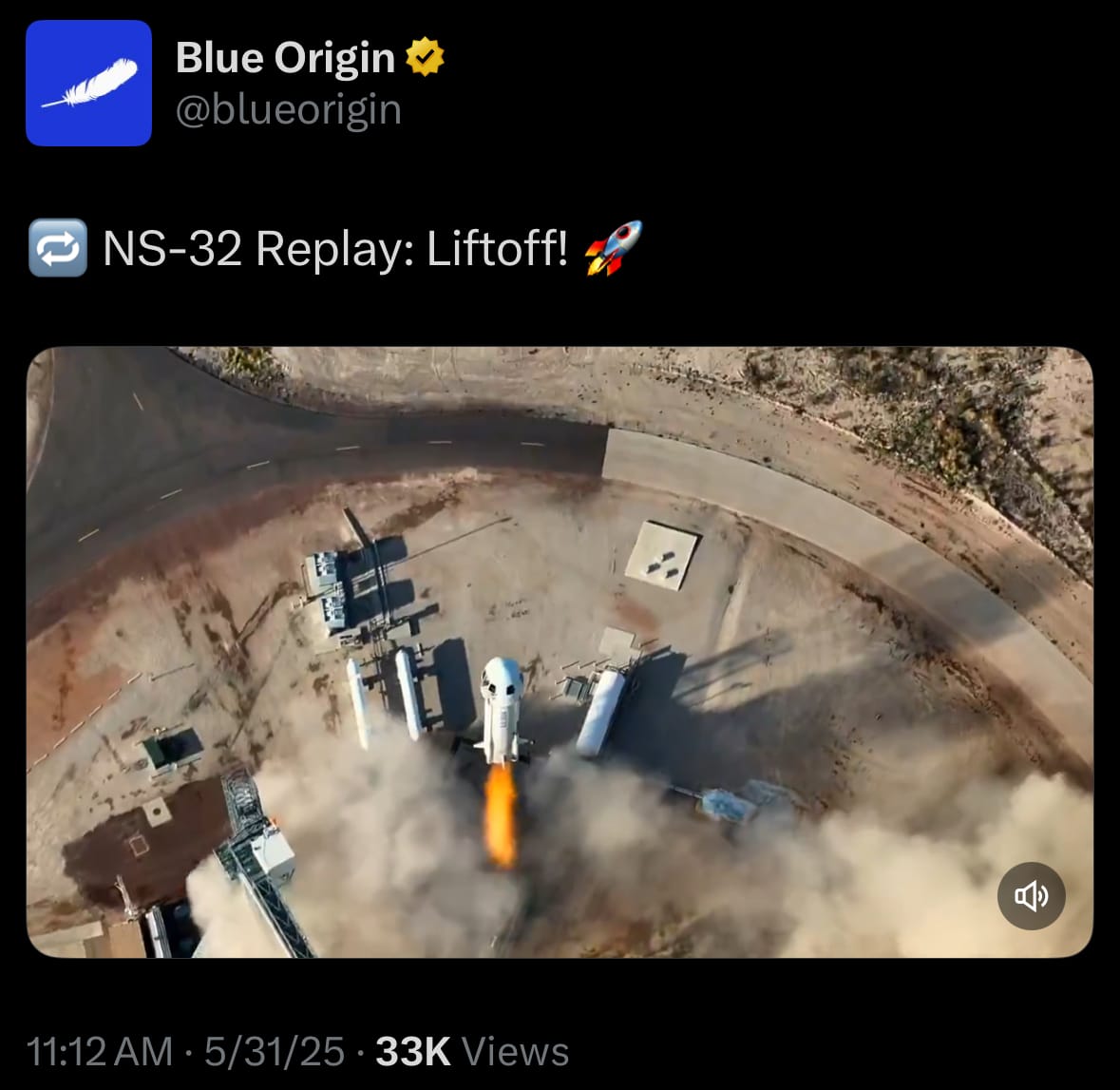
Statistic:
- Largest public European Union companies by market capitalization:
- 🇩🇪 SAP: $353.31B
- 🇩🇰 Novo Nordisk: $307.41B
- 🇳🇱 ASML: $293.92B
- 🇫🇷 Hermès: $289.48B
- 🇫🇷 LVMH: $272.37B
- 🇫🇷 L’Oréal: $226.09B
- 🇳🇱 Prosus: $224.61B
- 🇮🇪 Accenture: $198.33B
- 🇩🇪 Siemens: $188.65B
- 🇩🇪 Deutsche Telekom: $185.47B
- 🇪🇸 Inditex: $169.10B
- 🇩🇪 Allianz SE: $152.89B
- 🇳🇱 Airbus: $145.55B
- 🇫🇷 Schneider Electric: $142.07B
- 🇸🇪 Spotify: $136.39B
- 🇧🇪 Anheuser-Busch Inbev: $134.75B
- 🇫🇷 TotalEnergies: $129.30B
- 🇫🇷 EssilorLuxottica: $128.32B
- 🇫🇷 Sanofi: $125.70B
- 🇮🇪 Eaton: $125.29B
- 🇫🇷 Safran: $124.63B
- 🇫🇷 Air Liquide: $119.99B
- 🇪🇸 Santander: $118.94B
- 🇪🇸 Iberdrola: $115.55B
- 🇮🇪 Medtronic: $106.37B
History:
- The European Union (EU) traces its origins to the post-World War II era, when European leaders sought to prevent future conflicts through economic cooperation. In 1951, six countries—Belgium, France, Germany, Italy, Luxembourg, and the Netherlands—formed the European Coal and Steel Community (ECSC), integrating their coal and steel industries to foster interdependence. This laid the groundwork for the 1957 Treaty of Rome, which established the European Economic Community (EEC), aiming for a common market with free movement of goods, services, capital, and labor. Over time, the EEC expanded its scope, with milestones like the 1965 Merger Treaty unifying its institutions and the 1986 Single European Act promoting deeper economic integration. The EU as we know it emerged with the 1992 Maastricht Treaty, which formalized political union, introduced EU citizenship, and set the stage for the euro currency.
- The EU continued to evolve through expansion and reform. By 2004, it grew from six to 25 member states, incorporating former Eastern Bloc countries and promoting stability in post-Cold War Europe. The 2009 Lisbon Treaty streamlined decision-making and strengthened the EU’s global role by creating a permanent president of the European Council and a high representative for foreign affairs. The euro, launched in 1999, became the currency of 20 member states by 2023, though financial crises in the late 2000s tested economic cohesion. Challenges like Brexit in 2020, when the UK became the first member to leave, and ongoing debates over migration, climate policy, and sovereignty have shaped the EU’s trajectory. Today, the EU remains a unique supranational entity, balancing unity with the diverse interests of its 27 members.
Image of the day:

Thanks for reading!
Earth is complicated, we make it simple.
Click image to view the Earth Intelligence System:



Support/Suggestions Email:
earthintelligence@earthintel.news




